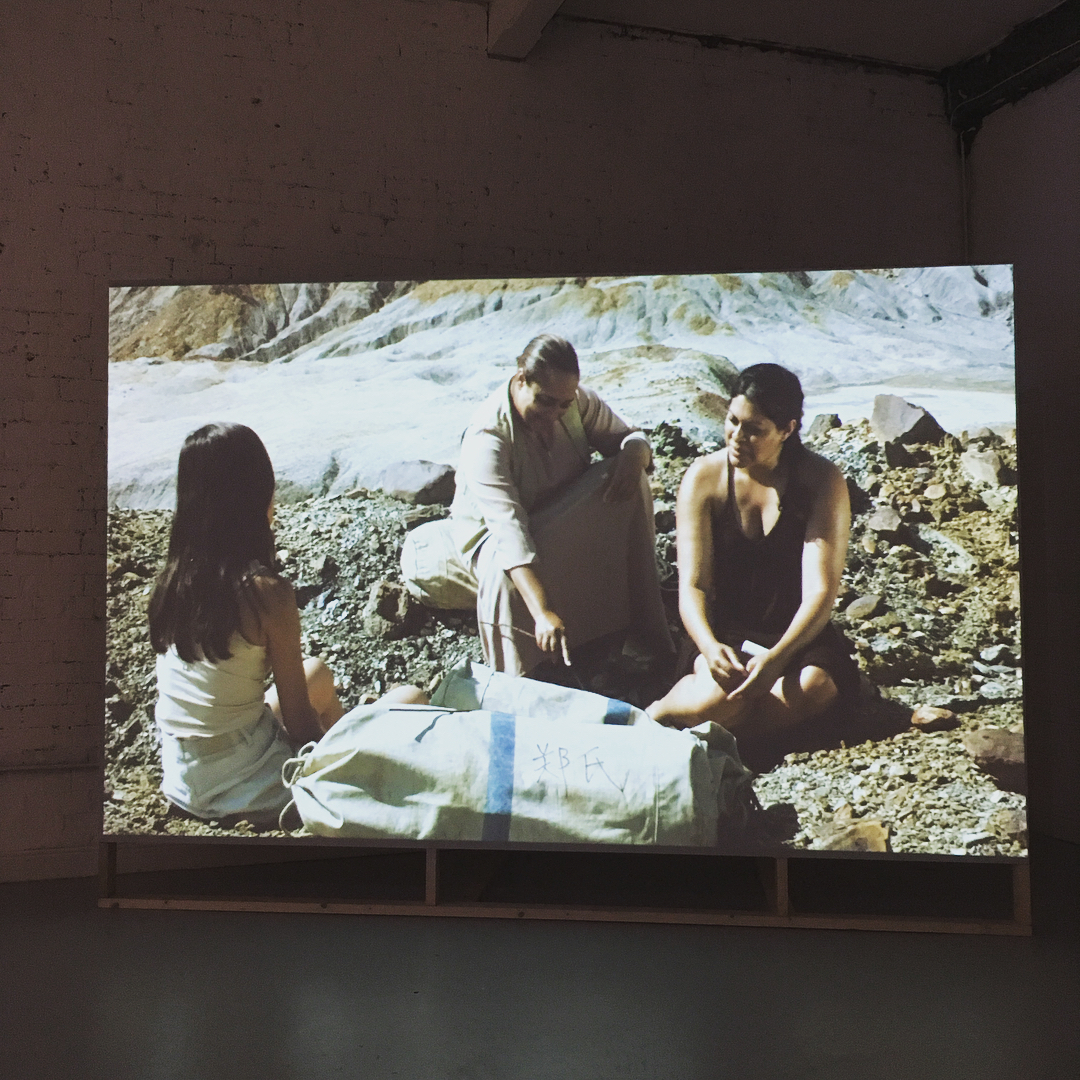Some thoughts on “We Speak Silent” at PS² in Belfast
About We Speak Silent, an exhibition curated by Clare Gormley at PS² in Belfast, September – October 2017.

Installation view: Nicoline van Harskamp
Art and political intention sometimes work in a synchronisation without direct translation, and sometimes miss each other completely. In ‘We Speak Silent’ the curator, Clare Gormley, managed to hit on a specific political note with such delicacy it made me want to write a little note about it. The exhibition, set to explore “the performative and political dimensions of speech and language” (from the exhibition page) included pieces by Hannah Weiner, an artist using language in non-conventional methods for poetry, prose, and performance, as well as a few contemporary audio/visual pieces responding to Weiner’s work. This note excludes both Weiner’s own piece and Justine McDonnell’s 2-channel installation set up outside the gallery, and is focused on Nicoline van Harskamp‘s PDGN (2016) and Tom Varley‘s Violence. Silence (2014).
PDGN is a short fiction film showing a world not divided by national cultures or identities, but has a culture that develops out of community as a practice. The language spoken in the film is scripted from non-native English speakers’s conversations in workshops mixed with fictional, feminist, and technical languages. Within the context of the exhibition, Gormley chose to project this film in an almost cinematic manner (on a large screen, with a bench for the viewer) and without subtitles. After a few moments of settling in front of the piece, I realised: this is what English speakers so often sound like to me, as a foreigner, when using language/dialect/phrasing that I don’t recognise. Even now, when in a social situation when I grow tired of the work involved in engaging in a second language, a group conversation sounds a lot like the film’s: it sounds like English, I think I can identify the topic (through context, as well), and the speakers all understand each other, but no recognisable sentence is actually included in the script. I strongly recommend native English speakers who visit Belfast to drop by to this exhibition with this thought in mind, it’s a strange linguistic mirror. I sometimes wonder if I already sound like this to other foreigners.
To me, PDGN is set up as a cultural proposal, 16 minutes and 21 seconds of a sneak preview into what evolution of culture can do to a community, and vice versa, when not organised and directed through an external interest. Its politics is distinctly feminist to me, reminiscent of Donna Haraway’s 1984 A Cyborg Manifesto. The artist’s choice to place this narrative in a post-apocalypse is perhaps hopeful, it is certainly an optimistic piece. The first engagement with the piece happens to the audience looking through the gallery while viewing and listening to Varley’s piece, which is a sample/testimony of a societal situation, the same one PDGN is proposing an alternative to.
The audio is that of a woman pronouncing words and terms in English, and a man repeating the words in an imperfect way. This is a recording of a medical examination of the man, who has a neurological impairment allowing him to understand only the more basic verbs and nouns (a bit more about this in this interview with the artist). The visuals are a colourful mix of motion graphics and video footage commenting on the two side of this examination. Confusing at first, the audio playing after the first minute rings familiar in terms of the ability to understand complexity of language. Aphasia sufferers are unable to fully grasp complex terms, and they walk around in a society speaking a secret code language with layers and meanings they will never be able to tell apart. Looking and listening to this piece with the background of the clear-to-self and confusing-to-others women of PDGN, the politics of the space was just touching. Can a society understand the possibilities in foreign languages and cultures being welcomed to make a significant everyday impact on local life as it currently stands?
